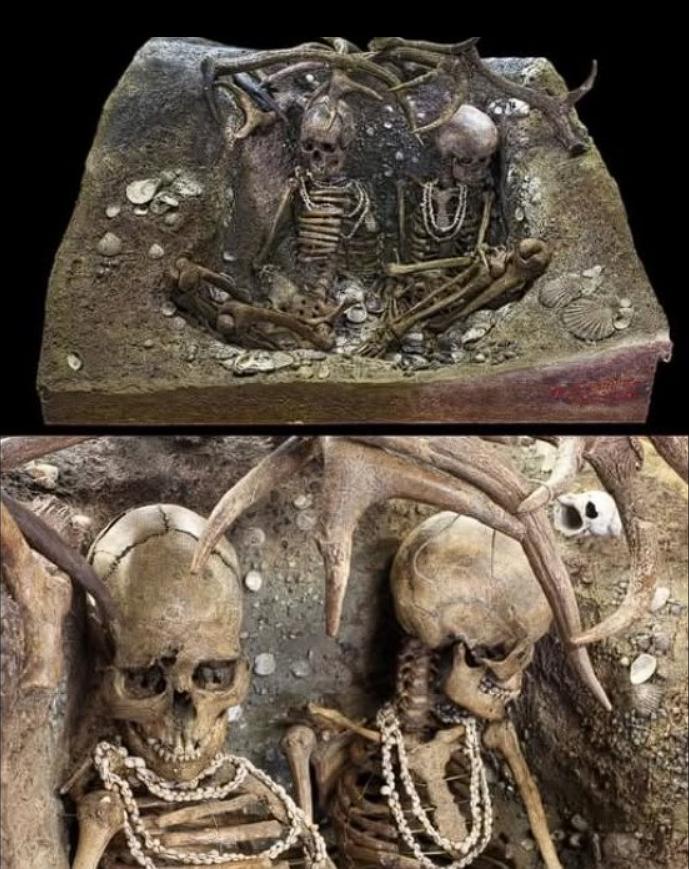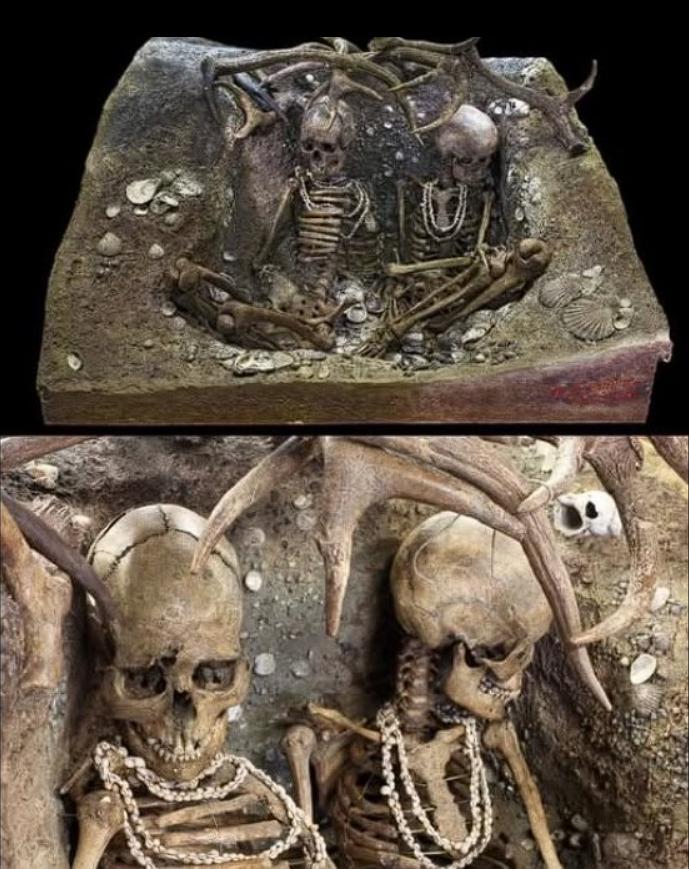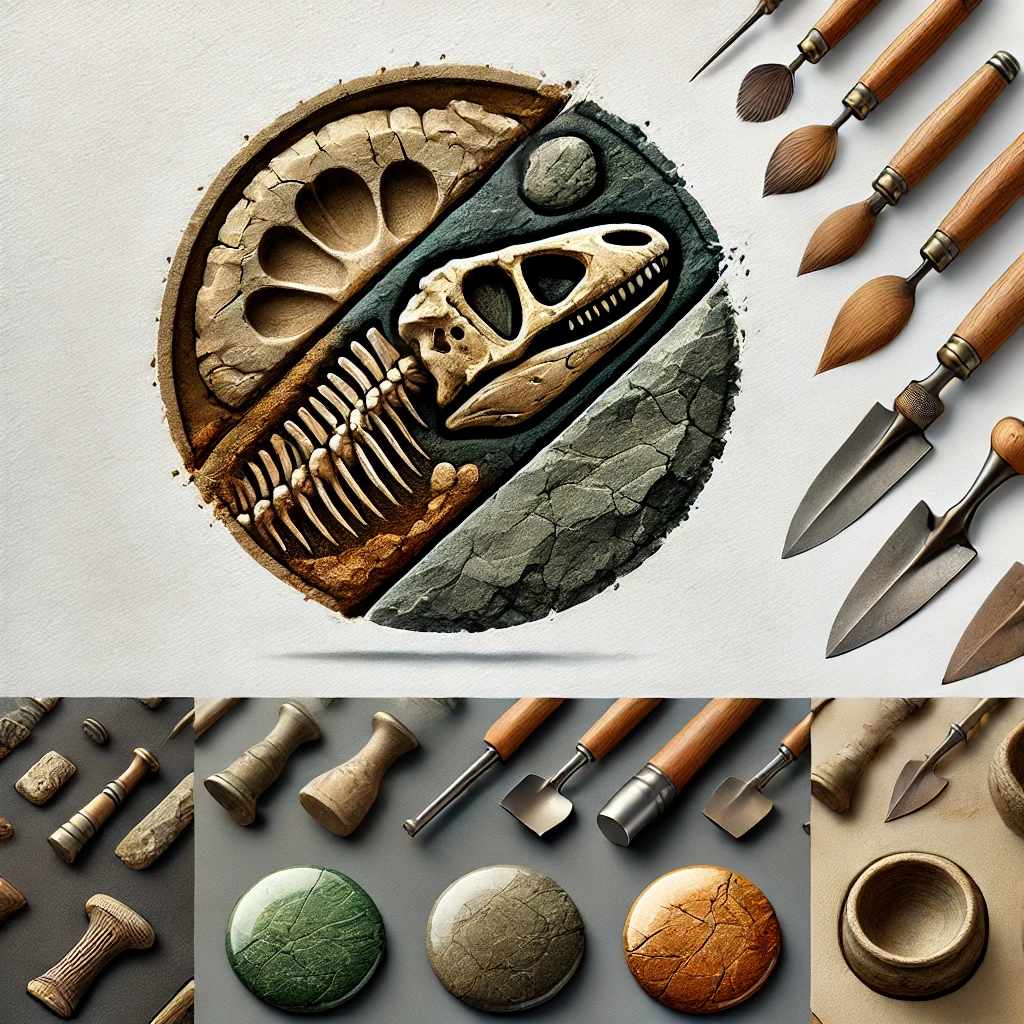Imagine standing on the windswept coast of Brittany, where the gray waves crash against ancient shores. Here, on Téviec Island, archaeologists unearthed a 6,500-year-old burial site, a haunting elegy from prehistoric Europe. It wasn’t just old; it was a story etched in shells and bones, a glimpse into a world where life and death were intertwined with ritual and mystery.

A Ritual Burial by the Sea: “A Natural Coffin”
- A Mesolithic Grave: “A Time of Hunters and Gatherers”:
- Discovered in 1930, the Téviec burial site dates back to the Mesolithic period, a time when humans lived by hunting, fishing, and foraging. “It was a world shaped by the rhythm of the sea, where survival was a daily dance with nature,” describes Dr. Isabelle Dupont, a Mesolithic archaeologist. “This burial isn’t just a grave; it’s a snapshot of that world.”
- This wasn’t just a burial; it was a window into a time when humans were intimately connected to the natural world, their lives dictated by the tides and seasons.
- The Shell and Antler Coffin: “A Ritual Act”:
- The two women’s bodies were carefully positioned inside a “coffin” made of sea shells and deer antlers, creating a dome that sheltered their heads. “Imagine the care, the intention,” says anthropologist Jean-Luc Moreau. “This wasn’t a random act; it was a ritual, a deliberate attempt to honor and protect their loved ones.”
- This wasn’t just a grave; it was a carefully constructed memorial, a testament to the community’s respect for their dead.
- Personal Adornments: “Hints of Significant Roles”:
- Along with their remains, shell necklaces were found, hinting at the significant roles these women may have held in their community. “These weren’t just decorations; they were symbols of status, perhaps of spiritual significance,” explains historian Marie Dubois. “They tell us these women were valued, remembered.”
- This wasn’t just a burial; it was a recognition of the women’s importance, a celebration of their lives.

A Violent End: “Questions of Conflict and Ritual”
- Skeletal Injuries: “A Painful Truth”:
- The beauty of the burial contrasts sharply with the painful truth revealed by science: both skeletons bore signs of severe head and rib injuries. “These wounds weren’t accidental; they were violent, deliberate,” says forensic archaeologist Dr. Pierre Laurent. “They raise chilling questions about how these women died.”
- This wasn’t just a peaceful burial; it was a mystery, a puzzle of violence and death.
- Murder, Sacrifice, or Conflict: “The Circumstances of Their Deaths”:
- Was this a murder? A sacrificial ritual? Or evidence of a violent conflict? “We can only speculate,” says anthropologist Sophie Bernard. “But these wounds suggest a darker side to their society, a world where violence was a reality.”
- This wasn’t just a burial; it was a crime scene, a testament to the turbulent aspects of prehistoric life.
- A Glimpse into Beliefs: “A Deep Bond Between Death and Spirituality”:
- The Téviec burial site offers a vivid snapshot of the inner world and beliefs of prehistoric people. “It’s not just about bones and shells; it’s about the stories they tell,” says archaeologist Claude Girard. “It breathes humanity into a distant era, showing us they were not so different from us.”
- This wasn’t just a grave; it was a window into their beliefs, their fears, and their hopes for the afterlife.

Conclusion:
The Téviec Island burial site is more than just an archaeological find; it’s a haunting elegy, a story told in shells and bones. It’s a reminder that even in the harsh, untamed world of prehistoric Europe, humans were capable of profound acts of ritual, love, and perhaps, violence. It’s a testament to the enduring mystery of our past, a story that continues to resonate with us today.

CÁC TIN KHÁC
Mary Walton: The Forgotten Inventor Who Helped Clean Up America’s Cities
Tomb of Queen Nefertari in the Valley of the Queens, Egypt
Discover the Hypostyle Hall of the Temple of Hathor at Dendera
Venus de Losange: Unveiling the Mystery of a 20,000-Year-Old Paleolithic Icon